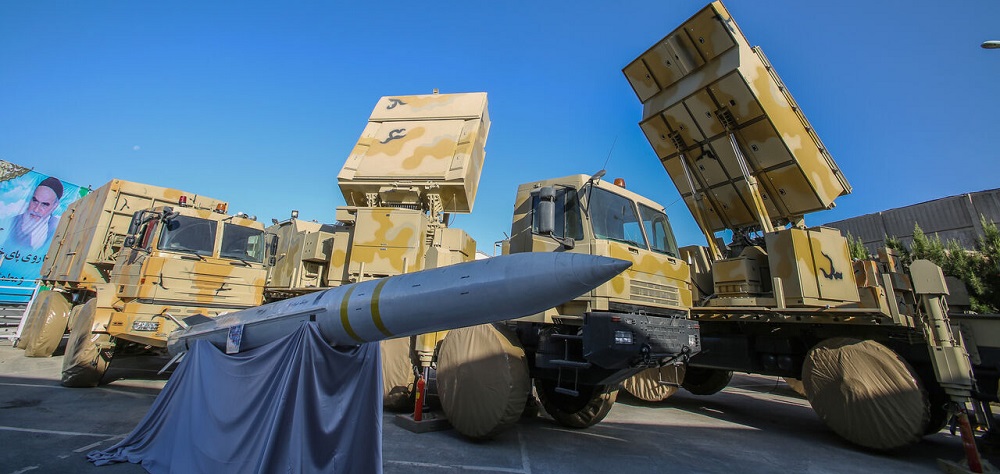Alwaght- As the terrorist groups in Syria lose to the central Syrian government that is every day moving closer to the liberation of the whole territories of the country to put an end to nine years of crisis and conflict, it seems that now Damascus can more seriously consider confronting the Israeli violations. Over the years of war, Damascus saw it wise not to respond to the Israeli attacks on its territories as the Syrian government was involved in multi-fronted battles against a string of terrorist groups fully backed by Western powers and their Arab allies.
But now Damascus seems to be changing this approach. What indicates a shift in the tolerant approach of the Arab country is a serious attempt to procure air defense systems from allied countries. According to a new report from the Russian aviation publication Avia.Pro, Syria had decided to buy Iranian Bavar-273 air defense batteries. DEBKAfile, an Israeli news website with access to security sources, said that Iranian Armed Forces deployed Bavar-273 air defenses to Syria’s T4 Airbase. Tehran and Moscow reportedly reached an agreement allowing Iran to dispatch its missile and fighter jet interceptors to Syria. On Friday, Syrian and Russian sources reported that Iran stationed the air defense system in eastern Homs province.
Certainly, deploying the Bavar-273 to Syria, which has capabilities similar to Russia’s S-300 and even S-400 air defenses and is optimized for hitting stealth targets like F-35 fighter jets, has a set of security implications. Here are some of them:
Israeli regime cordoned off by Axis of Resistance
The main factor motivating Israeli airstrikes in Syria over the past years is the Israeli leaders' endeavor to prevent Iranian entrenchment in Syria and close to the Israeli borders. The Israelis know that if this takes place, they have to expect fall of the last security layer and protection shield in the face of Iran.
Tel Aviv went to great lengths by supporting terrorists fighting Damascus to force Syria out of Iran-led Axis of Resistance. But when the strategy to split Syria and oust President Bashar al-Assad failed, the Israelis locked on countering massive Iranian presence in Syria and preventing strategic military facilities to Lebanese Hezbollah through Syria. They sought Russia’s green light to their measures. The repeated strikes on military bases where Iran-aligned forces are stationed was an effort to make Syria a Vietnam for Iran and increase the costs of Iranian push to build for long-term stay in Syria.
But with the deployment of Bavar-273 to Syria which had capability even greater than the S-300 and is unknown to the West and Tel Aviv, the Israeli strivings should be considered dead. The long-range system can detect targets 320 kilometers away and target them within 200 kilometers of its reach. The system can detect 300 targets and engage 60 targets simultaneously. It will give comprehensive updates of Israeli skies and aviation developments to the Resistance camp, useful to Lebanon and Hezbollah resistant movements to effectively counter the Israeli air violations. The interception system can detect and shoot down cruise missiles and even stealth fighters. The system covers the Syrian-Iraqi border areas including Deir ez-Zor province of Syria in the southeast where Iranian and Iraqi popular forces are operating.
The Bavar-273 entry to Syria assures the Syrian government that its skies will not be safe to the Israeli fighter jets anymore.
Israeli-Russian relations shift
Another implication of the deployment of the Iranian air defenses to Syria is the negative effects the Israeli-Russian relations will be subject to. This Iranian-Russian agreement marks the end of the Moscow-Tel Aviv military intelligence cooperation over Syria.
The evidence to this is the recent Russian scrambling of fighter jets upon detection of Israeli warplanes intruding the Syrian skies. Last week, Russia’s SU-35s conducted maneuvering flights over Syria’s south hindering Israeli airstrikes aimed to hit T4, Syria’s largest airbase where Iranian and Russian forces are stationed.
The Independent’s Arabic service recently reported that in late August, Moscow hurdled strikes on the Syrian armed forces in Qasioun in the capital’s outskirts. The Israeli operation reportedly sought to locate and strike the S-300 batteries Syrian army procured from Russia. Russia also prevented Israeli raids on Quneitra and Latakia. The Russian actions provoked a hasty visit to Moscow of the Israeli Prime Minister Benjamin Netanyahu to persuade Russian President Vladimir Putin to close eyes to air assaults targeting Syrian and Iran-aligned forces. Cold shoulder was shown to his demands, however.
As the Russian-Israeli relations went more frayed, at least in Syria, the Israeli security sources told DEBKfile that Moscow has given Tehran a green light to shoot down Israeli fighter aircraft in the Syrian skies without early warning.
Influencing regional alliances
Since the foundation of the Israeli regime, its leaders feared its isolation. David Ben-Gurion, the first Israeli prime minister, raised the “alliance of the periphery” doctrine which sought Israeli alliance with such countries as Iran, Turkey, and Ethiopia in the face of the Arab bloc. After six decades, this doctrine is facing the change of the threat sources.
Responding to the situation, Tel Aviv seeks to establish an anti-Iranian alliance with Arab states with American help. The plan started with a push to normalization with the Arab countries. Netanyahu proposed signing a non-aggression pact with Persian Gulf Arab monarchies mainly to block a positive response by the Arab leaders to a similar proposal, dubbed Hormuz Peace Endeavor (HOPE), made earlier by the Iranian president and foreign minister. The suggestion, yet to receive a clear response from the Arab capitals, is seriously challenged by the deployment of Iranian air defenses to Syria. If the Arab sides’ tendency to an alliance with Tel Aviv is because of their security concerns, the Iranian weapon can largely ease their worries. If their tendency stems from the balance of power in the region, this deployment will tip the scales to Iran’s favor. The Arab countries’ choice, no matter what it is, will in some way be influenced by the activation of the system in the region.



























